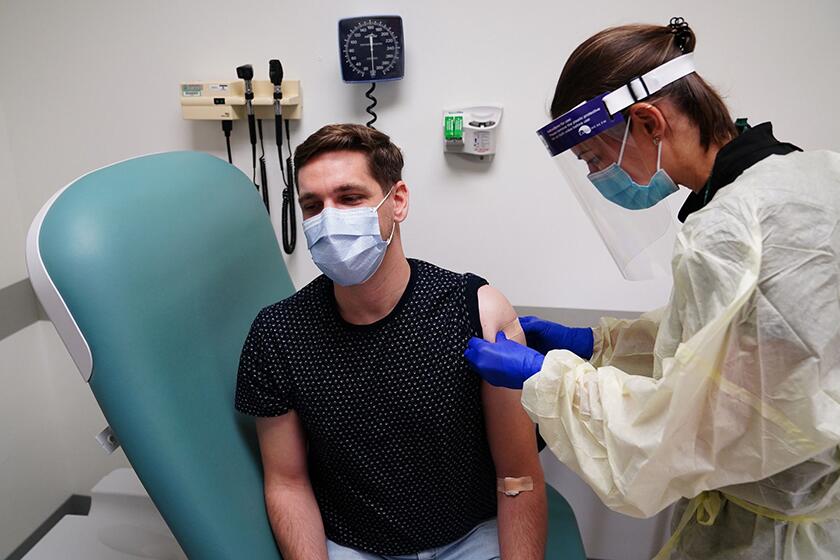California fixed the anti-Semitism in its ethnic studies program, but what’s left is still a mess

- Share via
Let’s face it. No ethnic studies course can be totally objective, devoid of all values and opinions. That would negate the reason for creating such a course in the first place. Racism is wrong; we’re not going to have a class debate in which racists get to present their opinions as equally valid. Slavery is evil, and so is genocide.
The question is whether the drafters of the curriculum for such a course in California will differentiate between such widely held truths and their own political and social opinions.
State education officials acted with lightning speed on the first draft of the ethnic studies curriculum, which was roundly criticized by legislators, many ethnic groups and the editorial board of the Los Angeles Times. They whisked it away for revamping, with state Supt. of Public Instruction Tony Thurmond vowing to add “the contributions of Jewish Americans and the high levels of anti-Semitism that have existed historically and that still do now.”
That was the result of a scathing letter written by the Legislative Jewish Caucus, including Assemblyman Jose Medina (D-Riverside), author of a bill to mandate an ethnic studies course in the state’s high schools. It was also a serious concern of mine.
The state is doing the right thing by requiring a rewrite, but it’s important that this not be done as a political move. Yes, the Jewish caucus had valid concerns that the curriculum appeared troublingly positive rather than remotely objective about the Boycott, Divest, Sanctions movement against Israel. But the main objective of the new draft shouldn’t be to appease Jews in the state, or the Hindus, Koreans, Armenians and other groups that all want a piece of the new course.
The draft curriculum already reads like a confused mishmash of facts, opinions and definitions. Ranking capitalism with white supremacy and racism as a form of “power and oppression” may be a sincerely held opinion, worthy of debate. But it is not a fact or a widely held truth in our society. Supplementing these types of extreme opinions by paying equal lip service to every group that has faced discrimination isn’t going to help. Priorities need to be set. The horror and national stain of slavery would be a good starting point.
The main goal for the new draft should be a cleaning of the jargon, bias and propaganda that heavily marked the first version. Same with the definition of BDS as a movement “whose aim is to achieve freedom through equal rights and justice.” That’s not a definition; that’s an opinion, and one with which many legitimate groups disagree. The list of social movements worthy of studying also bears broadening to go beyond the politically correct version compiled by the drafters.
And although it’s true that every field has its set of finely honed jargon, the impenetrable language of the curriculum is in need of translation to more comprehensible wording. This is one of many, many examples:
“Ethnic Studies also examines borders, borderlands, mixtures, hybridities, nepantlas, double consciousness and reconfigured articulations, even within and beyond the various names and categories associated with our identities.”
It also should do away with loaded language that, even if not designed to do so, would almost certainly make some students feel unwelcome and put upon.
Take a word that has come under particular criticism since the first draft was released: cisheteropatriarchy. The word was defended by R. Tolteka Cuauhtin, the Los Angeles teacher who co-chaired the advisory committee for the curriculum and an expert in the field of ethnic studies.
“Cisheteropatriarchy: a system of male, straight, conforming-to-assigned-sex system of power. What’s a better term to describe that?” Cuauhtin told The Times.
That may be true, but it’s also possible for experts in the field to be unintentionally a little too far down in the weeds of their topic. More important, this is a loaded term and a loaded definition. To a straight male teen who feels anything but powerful, it can send an implicit message that he is the bad guy. California’s ethnic studies course should foster mutual understanding, not division and stereotyping.
The bill for the required high school course has been put on hold until next year, a wise move. Not because students don’t need an ethnic studies course. Schools teach far too little about the nation’s history of slavery, about persistent, outright and systemic discrimination against Latinos and African Americans, and about inter-religious ignorance and prejudice.
But as the program’s startlingly deficient first draft clearly demonstrates, we need to develop a usable curriculum before moving forward.
More to Read
A cure for the common opinion
Get thought-provoking perspectives with our weekly newsletter.
You may occasionally receive promotional content from the Los Angeles Times.









